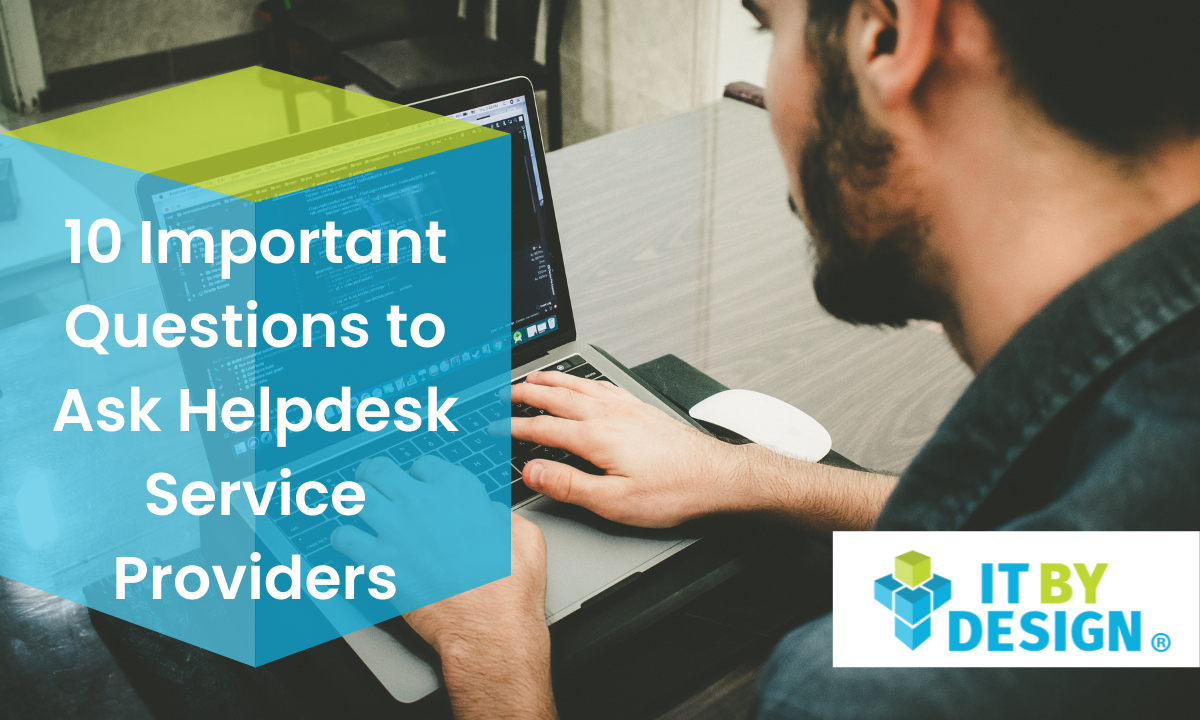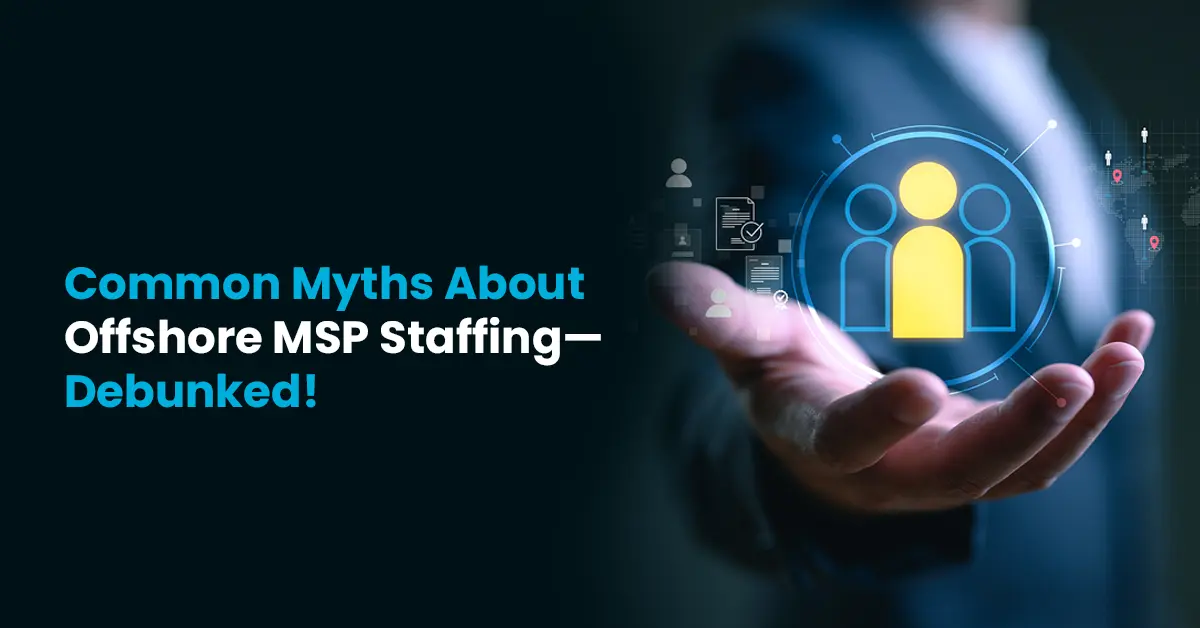When an MSP outgrows its in-house support capabilities, outsourcing to a reliable helpdesk partner can bring both tangible and intangible benefits. The challenge is that everyone has a different idea of what a great helpdesk service delivers. Some businesses give more importance to 24×7 availability while others are more interested in high customer satisfaction scores. The bottom line is choosing the right helpdesk for your business is a matter of clearly identifying what your MSP needs are, and then assessing potential partners against this framework.
Here are 10 questions that can help you discern between a good and great helpdesk service provider. These questions will enable you to identify the right service provider with the specific approach that aligns with your organizational values and customer expectations.
1. Does the helpdesk provide tier-based support?
Usually, MSPs starting out use a single-tier customer support system – a single point of contact to handle queries or solve problems. However, as they grow they tend to need more than just a single-tier model. This means investing in a multi-tiered support system.
Traditional helpdesks offer just L1 or Tier 1 support. But, since most mature helpdesk services have evolved in order to better serve their customer base, you should look for helpdesk service providers that subdivide technical support into tiers or levels. A comprehensive support structure revolves around Tier 1 (serves as the first point of contact for queries that need basic technical support), Tier 2 (less customer-oriented, focusing more on resolving issues and closing tickets), and Tier 3 (comprised of senior technical staff that deals with complex issues).
2. What about CSAT? How does the service provider calculate it?
An important factor in your decision to outsource your helpdesk support needs is assessing customer satisfaction. After all, your choice of partners will directly impact your reputation and service levels with your clients. What your customers are thinking, feeling, and saying about the outsourced helpdesk service is incredibly valuable and important for ensuring your MSP’s success in meeting customer expectations. One of the most important metrics for customer support is measuring your helpdesk’s customer satisfaction score (CSAT).
The mechanism a service provider use for CSAT should produce valuable metrics into back-end processes, staff training, and how they deal with specific customer groups and types of inquiry. It can also be a good idea to gauge the satisfaction of each customer at crucial points in their experience (right after closing a ticket) and include it in the cumulative CSAT. A service provider that is hesitant to share CSAT should be a red flag to an MSP.
3. Does the helpdesk measure FCR?
First-call resolution (FCR) is an important helpdesk metric and a critical element of customer relationship management (CRM). The term is self-explanatory; a helpdesk’s ability to resolve customer problems the first time they contact the helpdesk with no need to follow-up regarding the same incident. FCR not only helps gauge customer satisfaction but also measures your helpdesk professional’s efficiency. The higher the helpdesk’s first-call resolution rate, the more satisfied their customers tend to be. High FCR rates, paired with low talk time, is the goal here.
4. Does the helpdesk have the ability to answer LIVE?
How long does it take to respond to queries? What does the helpdesk do to improve the response rate? The most important attribute of good support is fast response time – how quickly does helpdesk respond to customers. Reducing response times and getting back to customers with helpful and relevant information is the key to supporting service success. One way to achieve this is forwarding calls to live operators. This makes the callers’ experience more positive. Not to mention, a human interaction over automatic recordings always feels more authentic in terms of being focused on customer experience.
Since a fast response makes customers feel important, helpdesk SPOCs should ideally maintain a ‘less than a minute’ call response time. To uncover that answer, consider asking process-related questions such as is the service provider still using a shared access mailbox to manage hundreds (sometimes thousands) of service emails or using an automation tool?
By using auto-responders, templates, and text shortcuts (to write responses) and categorizing incoming service requests based on priority, a helpdesk can reduce average response time and improve the average response rate. It’s also important for a helpdesk to record every single conversation or interaction with the customer to look back and understand the most common or challenging service issues.
5. Is the helpdesk familiar with the MSP model?
The MSP industry is competitive and quickly evolving. That makes it essential that your potential helpdesk partner is ready to embrace innovation and keep up with the latest industry trends, providing a service that is proactive at anticipating issues. A helpdesk can have thousands of support tickets on a daily basis, but the level of complexity can differ for each one. Being familiar with the MSP business model can help the helpdesk service provider deal with a large number of tickets with different complexities. It can empower the service provider to seamlessly integrate helpdesk service to an MSP partner’s tool-set and provide third-party or vendor management capabilities, meaning they can deal with third-party application software or ISPs to solve issues.
A potential service provider should understand standardized documentation and have helpdesk team(s) or SPOCs available for the client MSP to deal with a large volume of tickets, Round-Robin, and criteria-based assignments along with providing phone-based, chat-based, and after-hours support.
6. Does the helpdesk have a clearly-defined SLA? Can it be customized as per my MSP needs?
SLAs are important to measure customer pulse, service experience, productivity, and expectations. By mutually agreeing on the ‘scope of work’ clause under the SLA, you can subscribe to the most-suited support framework for your business. By accessing your MSP needs and then accordingly predefining metrics in the service agreement, you can ensure there are no grey areas of support and surprises on escalations. This way, you can also protect your brand reputation by creating measurable SLAs that meet your business standards.
To achieve that clarity, define your expectations in a clear, quantifiable manner that leaves no room for dispute. Be thorough: Have you agreed on acceptable measures for support quality, response rate, performance, and so on? Have you specified expected dates for one-time events, as opposed to regular (quarterly/monthly) reports for ongoing processes? Have you established the limits for service failures? Is the agreement likely to be revised and updated as your MSP scales and what is the process for that?
7. Is the helpdesk available 24x7x365 or closed on holidays? What’s its process for coverage in the case of the latter?
Most helpdesks fully cover nights and weekends, but you need to make sure the service provider you choose to partner with is able to meet your scheduling demands. Set expectations about working hours and ask them outright if they can commit to those shift patterns. Don’t forget to ask about their process for holidays, time off, etc. in order to clearly ensure that your MSP is fully covered all the times in your tier of service.
8. Does your helpdesk provide proper reporting to understand pain points and areas of improvement?
A reliable helpdesk always has detailed reporting capabilities because assessing statistics and analytics gives MSPs valuable insight into the helpdesk’s performance—it helps them prove their value to you. Reporting enables MSPs to easily see patterns that point towards high CSAT and KPIs that contribute to smooth operations and cost-efficiency. Ideally, helpdesk performance reports should include the average time expended in ticket response/resolution and the number of replies needed to close a ticket.
Slightly different, but related reporting should include metrics to be reviewed during weekly, monthly, and quarterly business review meetings so both parties can discuss gaps and process deficiencies as well as set service benchmarks for the upcoming quarter.
9. Is the helpdesk ITIL and/or SOC-2 certified? Will the helpdesk sign BAAs for HIPAA clients?
ITIL, the most widely-used service management framework around the world, is an integrated set of best practices and process framework for delivering IT support services. Similarly, a SOC 2 certified service partner securely manages your data to protect the interests of your organization and the privacy of your customer at a quantifiable level.
For process-oriented and security-conscious businesses such as MSPs, ITIL, and SOC 2 compliance can be a minimal requirement. If HIPAA, PCI, or GDPR compliance is important to your MSP because of vertical focuses such as healthcare, education, retail, or government, check if the helpdesk provider offers a service-level agreement (SLA) and a Business Associate Agreement (BAA) that guarantees the compliance you require.
10. Does the helpdesk have a well-defined onboarding process?
A smooth transition either from an internal service desk or from another IT outsourcing provider should not be stressful and disruptive. Hence, always review the onboarding process as part of the selection process so you know you’ll receive a smooth service launch as soon as you sign on the dotted line. An ideal service provider has a standardized checklist to make sure all aspects of toolsets, documentation, and processes are touched on. This way, the onboarding process remains robust and in-depth, setting a solid foundation for a successful partnership. As the best MSP practice, the potential partner should assist you with processes/policies during the entire process, ultimately helping you improve your OML (operation maturity levels).
So whether you are a startup or an established MSP, quality support services ultimately help you create a great customer experience and build a strong brand. By asking questions that clarify a helpdesk’s customer support framework and the metrics around it, you can swiftly find a provider that integrates easily into your MSP’s best practices to engage with customers.








